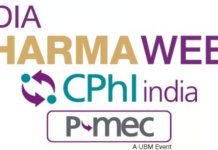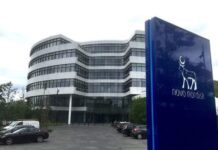- Allergan India joins hands with leading NGO to encourage greater sensitization in society and normal living for kids with CP
- Politician and social activist Priya Dutt lends support to the awareness initiative to emphasize that children with Cerebral Palsy Have A Right to Normal Lives
Mumbai, October 14, , 2014: A motor disorder that makes movement and conversation difficult, Cerebral Palsy afflicts millions of children across the world. Being different from the majority, children born with Cerebral Palsy often find it difficult to adapt to their everyday environment. However, they are no different than other children in their desires, their thoughts and their aspirations.
Able Disabled All People Together (ADAPT), a leading NGO working in the field, formerly known as Spastics Society of India, used the World Cerebral Palsy Day to initiate an awareness-cum-sensitisation drive for children with Cerebral Palsy, and celebrate the special achievements made by people with Cerebral Palsy who have defied physical challenges to make a mark for themselves in different areas.
At a programme to showcase the talents of special children and encourage their engagement and interaction with society, a number of children with Cerebral Palsy and their parents were joined by social activists and medical experts of the field. The programme was supported by Allergan India, the makers of Onabotulinum toxin type A, popularly known as Botox, a drug often used to manage upper limb spasticity in people with Cerebral Palsy.
Congress leader Priya Dutt, who is also known for her involvement with social causes, also lent her support to the cause by joining the initiative and encouraging the special children to lead productive lives.
At the event, ‘Achievement Awards’ were presented to people with Cerebral Palsy who have made remarkable achievements in their respective fields despite their physical challenges. Dr Mithu Alur, Founding Chairperson of ADAPT was also present on the occasion. The awards were given out in the fields of academics, corporate employment, social activism, entrepreneurship, arts and humanities, etc.
Cerebral Palsy is the most common physical disability in childhood and its impact can range from a weakness in one hand, to almost a complete lack of voluntary movement. Across the world, there are as many as 17 million people living with Cerebral Palsy.
“We need to understand that while Cerebral Palsy cannot be cured, there are mechanisms available today to manage it and make lives livable for its victims. It’s a matter of concern that a large number of kids with Cerebral Palsy do not get the required medical attention because there is little awareness, and even taboo, associated with this disorder. A concerted effort is needed to make sure therapy and rehabilitation processes reach all affected people to help them improve their quality of lives. For example, in people with debilitating upper limb spasticity incessant muscle contractions can be controlled by injecting onabotulinumtoxin A popularly known as Botox into the affected muscles, in addition to physical therapy and other rehabilitation measures. This is of immense help,” says Mr Raghu Kumar, Managing Director of Allergan India.
Children born with CP do not exercise normal control over their movements, and a majority of them face difficulty in talking and communication. However, this does not mean they do not have talents or they do not desire to excel in whatever they do.
“Our nervous system is the master control of our body. It is our nervous system that sends signals to the entire body organs to perform their tasks. It controls our body and muscle movements through signals, and allows us to perform our daily actions and reactions normally. Cerebral palsy is a disorder of the nervous system, in which the normal communication between the mind and the body is disrupted. When Cerebral (an area in the brain), is affected by Palsy or partial or complete muscle paralysis, this affects the human body with rare and sometimes brutal physical disabilities. The result is loss of control over muscle movements,” says Dr Taral Nagda, Paediatric Orthopedic Surgeon, Hinduja Hospital, Mumbai.
At the event, special children participated in a drawing completion and were asked to draw their heart out at their respective canvasses. Talk sessions were also held with their parents informing them about the recourse they can take to make the lives of their children better and more productive.
“Having Cerebral Palsy is very unfortunate. It makes the life of the person as well as those around him or her difficult. However, we need to understand that while these children may be born with a neurological disorder, this doesn’t make them any less of children. They have desires like other children, they want to play, they want to draw, sing and dance like others. Through a little more sensitive approach and training, we can allow these special kids to live productive lives,” says Dr Nagda.
The most common signs of cerebral palsy are visible during the first three years of life. If a child starts to crawl, walk or speak much later than expected, crawls in an unusual way, has abnormal muscle tone, faces difficulty in feeding & sucking, usually found lying down in an awkward position, gets startled easily, has bad coordination and balance, hearing problems, eyesight issues, bladder control problems, has seizures, has restricted movement or problems in swallowing then the child needs immediate intervention.
The event also saw the showcasing of trailer of the film Margarita which revolves around a girl living with cerebral palsy. CCI Newswire
























